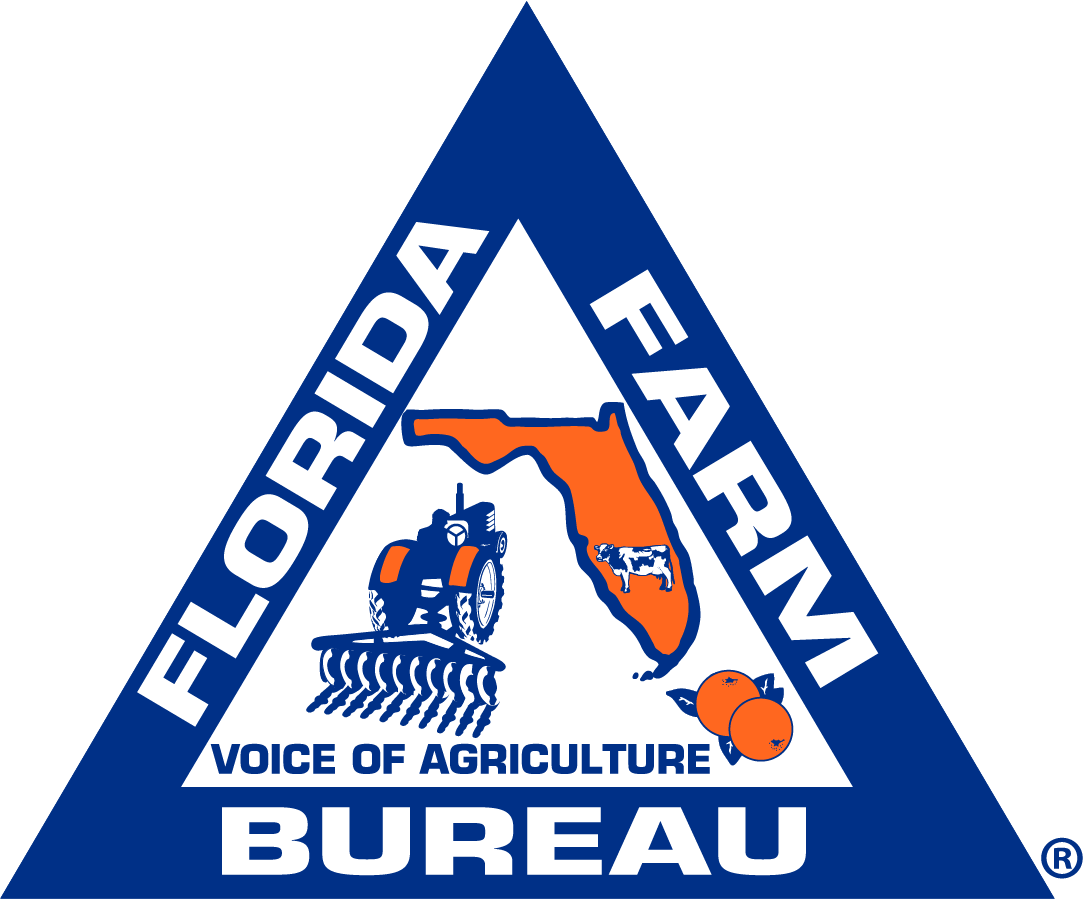May 2024 FloridAgriculture e-Newsletter
 The Florida Department of Environmental Protection (FDEP) monitors all major water bodies in the state of Florida for nutrient levels and potential pollutants.
The Florida Department of Environmental Protection (FDEP) monitors all major water bodies in the state of Florida for nutrient levels and potential pollutants.
If a water body is considered impaired, the whole watershed is placed into a Basin Management Action Plan (BMAP).
A BMAP is a framework for water quality restoration that contains local and state commitments to reduce pollutant loading through current and future projects and strategies. BMAPs contain a comprehensive set of solutions, such as permit limits on wastewater facilities, urban and agricultural best management practices (BMPs), and conservation programs designed to achieve pollutant reductions established by a total maximum daily load (TMDL). BMAPs are adopted by Florida Department of Environmental Protection Secretarial Order and are legally enforceable.
All land uses within the BMAP boundary have nutrient loading associated with and assigned to them. All land uses have steps and requirements within the BMAP to reduce nutrient loading into the water body.
For agricultural lands, the Florida Department of Agriculture and Consumer Services (FDACS) Office of Agricultural Water Policy (OAWP) implements the Best Management Practices (BMP) Program statewide. For agricultural properties that lie within the boundaries of a BMAP, either enrollment in the BMP Program or onsite water quality monitoring with FDEP is required.
For landowners who are enrolled in the FDACS BMP Program, and properly implementing best management practices, they are granted a “presumption of compliance” with state water quality standards.
For the past few years, OAWP has been in the process of sending letters to landowners of agricultural properties within BMAPs that are not currently enrolled in the BMP Program to encourage them to enroll. FDACS first started sending these letters out in the Lake Okeechobee Basin by sub watershed. They have completed that mailout effort and are now moving on to the Indian River Lagoon (IRL) BMAP area.
The IRL BMAP encompasses northeastern St. Lucie County, eastern Indian River County, eastern Brevard County, and a small portion of southeastern Volusia County.
FDACS is currently using a contractor, Carr, Riggs & Ingram, LLC (CRI), to facilitate sending out and responding to letters for unenrolled landowners in the IRL BMAP. Specifically, these letters will be addressed to landowners owning parcels in the IRL BMAP area that have both an ag tax property use code and an ag tax valuation, based on information from the property appraiser’s websites, who are not enrolled in the FDACS BMP program.
CRI will be handling all the responses from the mailout and will be working with respondents to determine if they need to be enrolled in the FDACS BMP program. Once that is determined, FDACS will be contacting the respondents to schedule a time that is convenient for the landowner/producer for a site visit to enroll the property in the BMP Program.
FDACS has stated that the best course of action would be to respond using the postcard provided via mail (an envelope will also be provided with the letter) or via emailing the postcard to [email protected].
If an agricultural property is within the boundaries of a BMAP, the landowner can either enroll in the FDACS BMP Program or monitor their own water quality at their own expense and report that data to FDEP, which can be exorbitantly time consuming and expensive.
If a landowner does not consider themselves bona fide agriculture but is utilizing agricultural tax property use code and valuation, they can contact the county property appraiser via letter or email to remove their greenbelt status and copy FDACS and FDEP on the correspondence to remain out of the FDACS BMP Program and prevent the need for water quality monitoring.
After responding to the letter, an FDACS OAWP Field Staff Representative will contact you to schedule a time to visit your agricultural property. Once on site, the representative will request a short tour of your operation and go through the applicable BMP Manual and BMP Checklist with you, noting which BMPs are applicable and should be implemented. You will then sign a Notice of Intent to Implement (NOI) to complete your enrollment in the BMP Program. Once enrolled in the BMP Program, the landowner or farmer/rancher is required to maintain records of soil tests and nutrient application of nitrogen and phosphorus. These application records are to be put into an FDACS provided Nutrient Application Recordkeeping Form (NARF).
After the initial enrollment visit, FDACS is required by law to perform Implementation Verification (IV) visits with enrolled properties every two years. During this IV visit, FDACS and the landowner and/or farmer/rancher will review the checklist, the NARF, and any other nutrient application records. Only the NARF with nitrogen and phosphorus application timings and amount will leave the farm with FDACS.
For more information on FDACS BMP Program, click here.

 The Central Florida Regional Planning Council in conjunction with the Highlands Soil and Water Conservation District is hosting a Landowner Assistance Expo on Tuesday, June 11, 2024, from 8:30 a.m. – 2:00 p.m. It will be held at the Bert J. Harris Agricultural Center Auditorium at 4509 George Boulevard, Sebring, FL 33875.
The Central Florida Regional Planning Council in conjunction with the Highlands Soil and Water Conservation District is hosting a Landowner Assistance Expo on Tuesday, June 11, 2024, from 8:30 a.m. – 2:00 p.m. It will be held at the Bert J. Harris Agricultural Center Auditorium at 4509 George Boulevard, Sebring, FL 33875. On April 18th, 2024, the U.S. Court of International Trade remanded a 2019 decision to the U.S. Department of Commerce (DOC), which determined Mexican tomatoes were being dumped in the U.S. market. This decision came as a result of a court case filed by a large Mexican tomato exporter.
On April 18th, 2024, the U.S. Court of International Trade remanded a 2019 decision to the U.S. Department of Commerce (DOC), which determined Mexican tomatoes were being dumped in the U.S. market. This decision came as a result of a court case filed by a large Mexican tomato exporter. On February 15, 2024, the U.S. District Court for the District of Columbia issued an order that nullified the U.S. Environmental Protection Agency’s (EPA) approval of Florida’s application to take over permitting authority from the U.S. Army Corps of Engineers (USACE) under Section 404 of the Clean Water Act (CWA) within the state. The court’s decision was based on allegations that the federal defendants violated the Administrative Procedure Act (APA) and the Endangered Species Act (ESA) during the approval process, which occurred in the final days of the Trump administration.
On February 15, 2024, the U.S. District Court for the District of Columbia issued an order that nullified the U.S. Environmental Protection Agency’s (EPA) approval of Florida’s application to take over permitting authority from the U.S. Army Corps of Engineers (USACE) under Section 404 of the Clean Water Act (CWA) within the state. The court’s decision was based on allegations that the federal defendants violated the Administrative Procedure Act (APA) and the Endangered Species Act (ESA) during the approval process, which occurred in the final days of the Trump administration. On April 2, the U.S. Environmental Protection Agency (EPA) announced changes to the pesticide labeling requirements of chlorpyrifos, diazinon, and malathion. Additionally, the EPA committed to issuing Endangered Species Protection Bulletins that set geographic limitations for these organophosphate insecticides, which will be available on Bulletins Live! Two.
On April 2, the U.S. Environmental Protection Agency (EPA) announced changes to the pesticide labeling requirements of chlorpyrifos, diazinon, and malathion. Additionally, the EPA committed to issuing Endangered Species Protection Bulletins that set geographic limitations for these organophosphate insecticides, which will be available on Bulletins Live! Two.